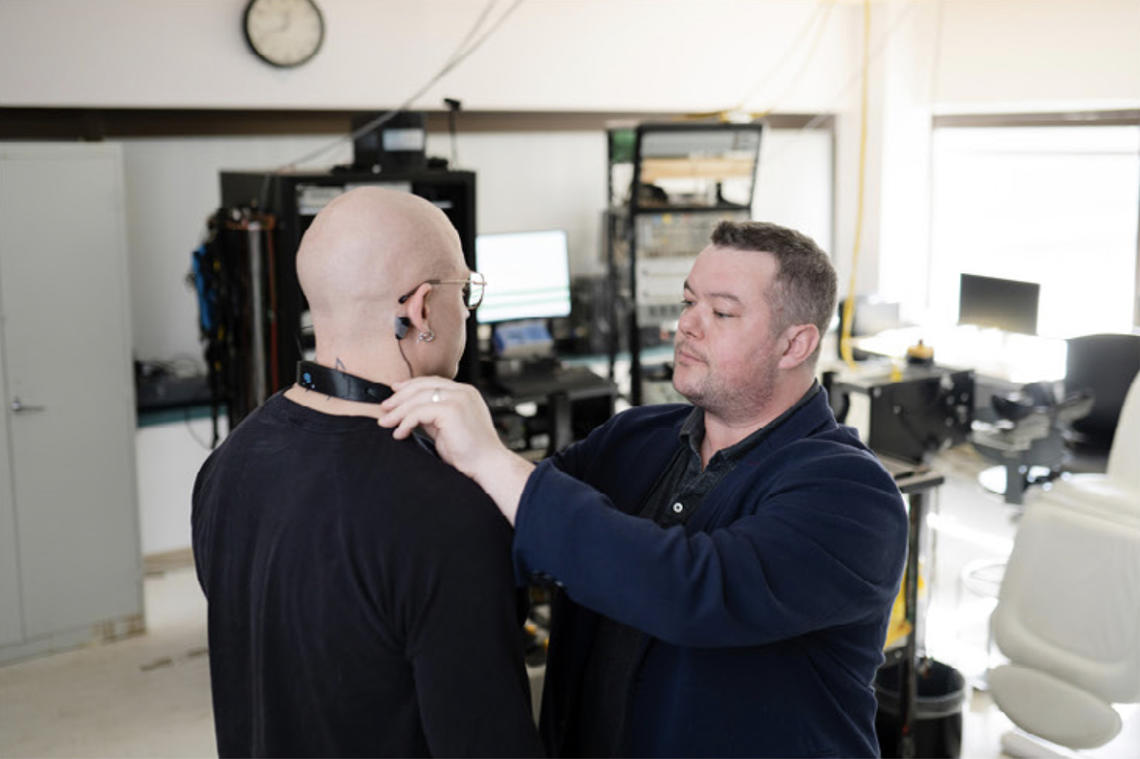July 11, 2022
Midway-ride nausea all part of aging for older Stampede-goers, says UCalgary researcher

Is the classic Tilt-A-Whirl now more of a Tilt-and-Hurl? Has a ride on the Zipper become a stomach flipper?
Take solace, aging Calgary Stampede midway fans: finding nausea where you once sought the thrills-and-spills joy of carnival rides is not only common, it’s also as much a part of getting older as wrinkles and grey hair.
So says a University of Calgary researcher who studies motion sickness and the factors that can leave older midway riders wishing they had just said “No” to the classic carny question, “Do you want to go faster?”
Spinning chair offers answers
“I suspect it is some degree of sensory incongruence that crops up when older adults hop on a midway ride, which is something they likely don’t do very often in everyday life,” says Dr. Ryan Peters, PhD, assistant professor in the Faculty of Kinesiology and a member of the Hotchkiss Brain Institute in the Cumming School of Medicine.
Peters has spent a lot of time studying the vestibular system, part of your inner ear that senses head motion and relays this to the brain to help regulate balance, and compensate for external forces like those experienced on a ride and Earth’s gravity.
Using a specialized chair that spins in place (“kind of like a research-grade Gravitron,” says Peters), the scientist authored a research paper on vestibular function in young and older adults, finding that vestibular sensitivity declines with age.
“This is analogous to the hearing loss we experience with age — both the auditory and vestibular systems rely on tiny, delicate, hair cell receptors in the inner ear to detect sound pressure waves and head motion,” says Peters. “We lose these hair cells across the lifespan at a steady rate.”

Ryan Peters places a wearable vestibular stimulation device on a student in the lab.
Ryan Peters
Vestibular system needs to match other sensory information
In basic terms, we need those receptors to help our brain deal with the sensory information that comes with a thrill ride at the Stampede, and when the vestibular system can’t keep up, we get sick.
“When we’re on a midway ride, we take in sensory information from multiple sources — the skin on our back/butt tells us about the pressure against the seat, our eyes provide information about visual details and patterns of motion and our vestibular system tell us about movement of the head,” explains Peters.
“Under typical circumstances, our brain seamlessly combines these different sensory cues to provide a unified perception of the ride we’re experiencing. However, we know that when these signals are incongruent this leads to motion sickness, dizziness, nausea and so forth.”
If you’ve ever turned green playing a video game, you’ve experienced what happens when vivid visual optic flow patterns fail to match what the vestibular system senses. This special type of motion sickness, called “simulator sickness” or “cyber sickness” is well-known in astronauts and pilots using virtual-reality based training programs.
Ride a lot, feel better eventually
The good news? Practice can reduce this effect, with the human nervous system able to adjust and compensate for this type of incongruence.
Peters, who is co-director of the University’s Integrative Sensorimotor Neuroscience Laboratory, is currently working with a company, Neursantys, to develop wearable vestibular stimulation units that could, in theory, alleviate these symptoms of motion sickness.
The bad news? The unit isn’t available yet, so for older thrill-seekers it means suffering through more midway misery before it’ll get better.
“That would mean that older adults should just hop on more and more midway rides to alleviate their symptoms,” says Peters.
“While this is good news for the marketing team at the Stampede, ‘Make yourself sick and just push through it,’ may not be a treatment older midway riders want to try.”



